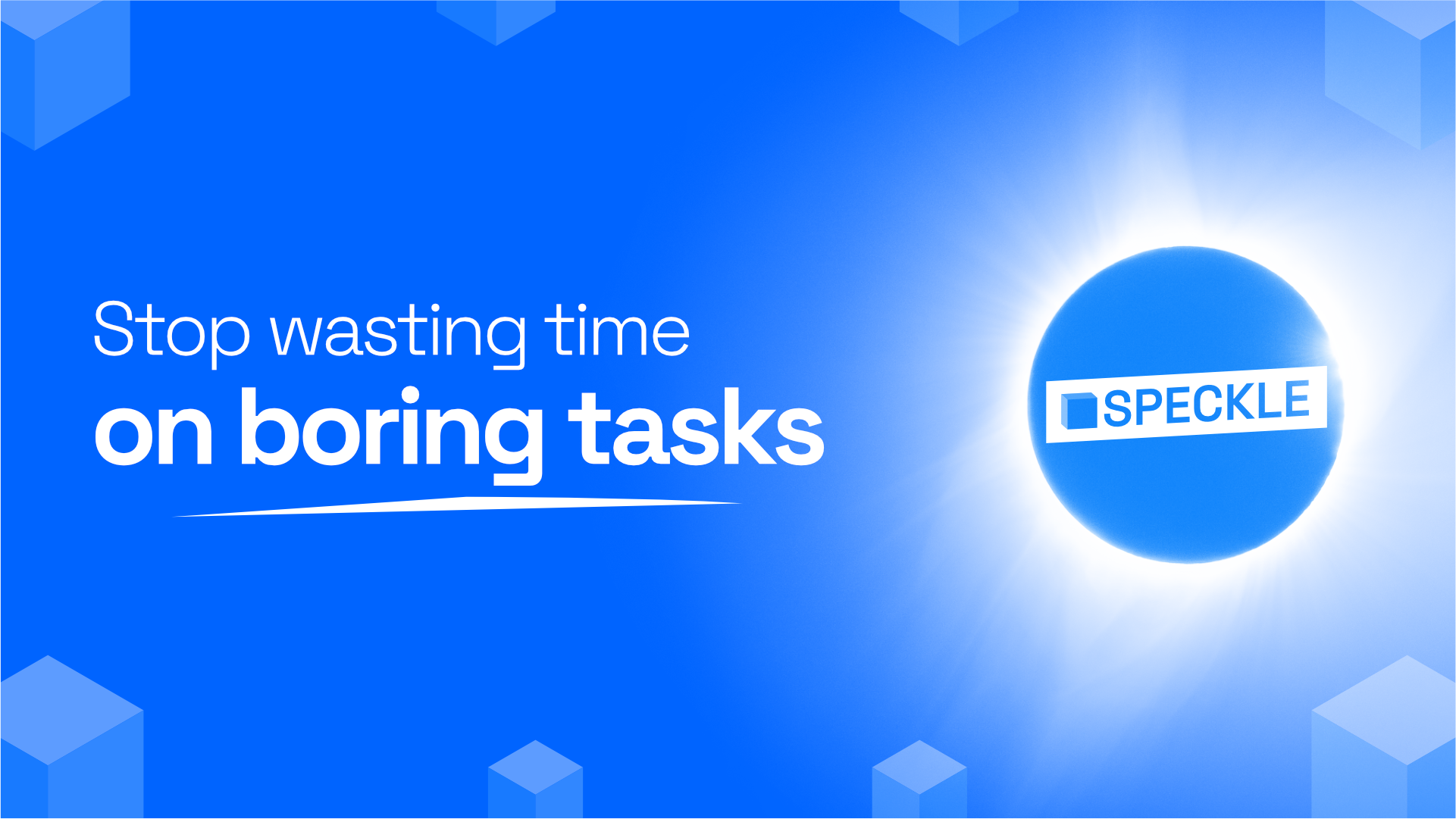AEC’s Current State of Evolution
Historically, the Architecture, Engineering, and Construction (AEC) industry has been slow to embrace change and evolve technologically. As one example, the adoption of Building Information Modelling (BIM) has been a multi-decade journey and is still far from gaining universal acceptance throughout the industry.
There are many reasons for what appears to be a laggard approach to technology adoption within the AEC industry: intense competition and razor-thin commercial margins mean there is often little budget to innovate. AEC project outcomes also demonstrate a skewed probability - a project is more likely to be over budget (or over time) than under, and requires careful management to avoid this likelihood.
It’s a fact: making mistakes during the design process is easy. Such errors are difficult to spot and lead to tremendous time losses when correcting them later on in the process. This manually dependent and inefficient review process cannot meet high efficiency and accuracy requirements that would unlock AEC’s pace of evolution and progress.
However, technology also offers opportunities to break out of these negative feedback loops. BIM offered one example of a technology that promised to resolve inefficiencies within the industry, to either improve margins or reduce risk. We now understand that using BIM alone is insufficient to realise these promised outcomes, but it does provide a solid grounding.
There are many other complementary technologies required to help us achieve this, and at Speckle we are proud to have been pioneering them:
- We started with unlocking your data from the vendor-specific 3D & BIM authoring tools, allowing that data to be stored in a neutral format in the cloud or imported into the software of your choice.
- We then enabled collaboration, allowing teams to communicate directly from their 3D model and work in more effective ways. There has been a clear demand for these technologies, and we see growing adoption throughout the industry.
- Right from the beginning of Speckle, we have provided many technologies to enable automation, including Application Programming Interfaces (APIs), Webhooks, and Software Development Kits (SDKs).
Yet, we feel there is still a long way to go. So how can we continue to accelerate the pace of innovation in AEC?
Automation is Leading the Pace for Innovation
From having been in the industry ourselves (many of the Speckle team are architects or engineers) and from talking to many of you, we know there exists a huge amount of duplicated work, tedious tasks, and rework throughout much of our design and delivery processes. As an industry, we spend a huge amount of time and effort reviewing, managing, and reworking data to ensure it meets the quality expected of us. For example, we know that 3D data and BIM are not always authored consistently or in conformance with project or industry standards.
We believe automated solutions play an essential role in moving the construction industry forward.
Why Do We Need Automation in AEC?
Working with an automated process can remove bulky and time-consuming chores from the pipeline and allow you, whether you are an architect, engineer, or developer, to focus on the things that will positively impact your team. Automation technologies significantly impact the productivity of project teams and business outcomes. Removing menial or mundane tasks can improve the User Experience, helping people feel valued and happy in their roles.
Research on the usage of automation technologies in AEC could lead to the following positive impacts:
Providing Quick Feedback
Automation can provide quick feedback on your work's quality, leading to actionable improvements that help raise the quality of your end product. Automation ensures your delivered work is consistent throughout the project's lifetime and across all projects produced by the organisation - adding strength to your brand.
Productivity and Efficiency
When working in teams, automation accelerates (or eliminates) tasks that create blockers when coordinating work and delivering projects on time. Such blockers usually create frustrations among teams, negatively impacting team productivity, morale, and dynamics.
Democratising Expertise
Automation can analyse your work, augmenting it with data drawn from other sources or generated from its analysis. You can receive reports and automate the communication of these reports to your team members and other partners. You can make decisions faster and with better information. You can capture the knowledge held by expert specialists, making it available to be used on-demand by everyone - from the interns to the CEO. This improves decision-making and quality of work while increasing the impact of an individual’s expertise.
Enabling New Value-Adding Processes
Automation can transform previously impractical or costly processes into practical, cost-effective options. Where it was previously impractical to update complex analysis on every change to geometry, automation enables this. This provides value-adding services to your clients that you could not offer before. Or perhaps you could only deliver this service once for a single design option? You can now deliver it multiple times throughout the project's lifetime for every design option.
Where Should We Start Automating?
Below, we compiled key automation initiatives that are contributing to accelerating the pace of innovation in AEC:
Code Compliance
In 2013, Zhang et al proposed a new automated compliance-checking system that addresses the problem of manual coding rules. This Automatic Code Compliance (ACC) system is based on BIM and knowledge graph and was proven to reduce time and costs while improving the quality of reviews.
Clash Detection
Clash detection helps identify design and coordination issues during the early designing stage, preventing costly mistakes and rework during construction. Benefits include cost-effectiveness, safety, and high-quality construction outcomes. It enhances collaboration, minimises errors, and ensures that the project meets or exceeds stakeholders' expectations.
Design Analysis
In design analysis, automation acts as an insightful prompter, offering immediate feedback to engineers, architects, and designers. It can streamline the validation of structural integrity and aesthetic cohesion, enhancing the creative process and ensuring designs meet and surpass industry benchmarks sooner with feedback to the iterative process.
::: tip 💡Did you know?
It is estimated that firms adopting automation can achieve savings of 40 to 50 percent in internal compliance resource requirements. Further, 62 percent of companies were able to reduce assessment costs, assessment timelines, and overall compliance impact with automated evidence collection.
:::
The Shortcomings of Existing Solutions
Having worked with a number of these solutions and spoken to many others in the industry, we put together a list of shortcomings that we believe are slowing down the progressive AEC shift:
Fragmented Specialist Tools
- Data silos in each application (where there is no Speckle connector!)
- Hard to justify the licensing fees against usage frequency.
- Limited options to export results or customise reports.
- Unresponsive or slow delivery of new product features.
Desktop Software Offering
- It is inaccessible to others who do not use the software.
- It cannot be accessed from mobile devices or on the go.
- Not scalable to compute multiple simulations in parallel.
- Some types of analysis require a powerful desktop computer.
- Forces an IT asset renewal programme to upgrade expensive computers.
The User Must Initiate the Automation
- They need to be present to click buttons and know which commands to send, when, and in which order.
- Forces a working process that is synchronous where the user must always be present when it is running.
No, or Limited Extensibility
- Limited software development kits.
- Poorly documented or non-existent APIs.
- Only a few supported languages or frameworks.
- The developer experience is an after-thought.
Webhooks Require a Server Exposed to the Internet
- Security concerns about exposing a system to the internet.
- Need specialised expertise to understand hosting implications, to upgrade, and maintain.
- Monitoring and maintenance of the system is often neglected.
What’s Next?
Join us at SpeckleCon, our free and online AEC conference, where we will announce a brand new product that aims to accelerate the peaceof innovating in AEC. Our goal is to make automation accessible to all of you. Making the AEC better means unlocking productive workflows. Let’s stop wasting time on boring tasks, together, and join us at SpeckleCon to discuss this further.
Subscribe to our newsletter to receive product updates straight in your inbox.



